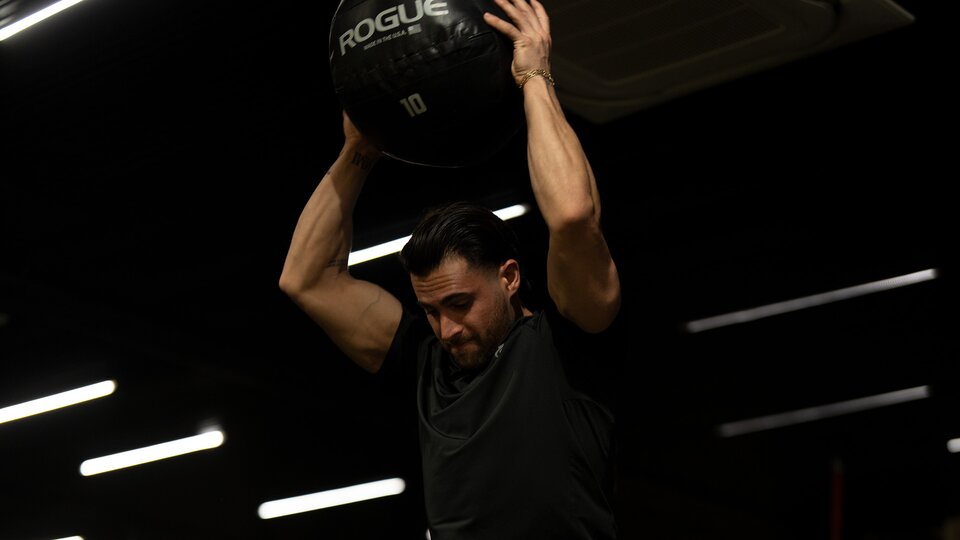Working out can quickly become complicated. You have to remember what weight you lifted last week, pay attention to your form, plan which order to do your workouts in (“man, all the squat racks are full…”), and you have to give it your all. It’s no wonder injuries and poor progress abound. Nobody is ever perfect in the gym, and that’s okay. Just stay focused on your goals and stay aware of these most common workout mistakes.
Not Warming Up Correctly
This mistake includes not warming up at all. Safe to say, if you’re not warming up, then your risk of injury will be up. Warming up is essential to preparing your body for lifting weights or cardio. It gets blood flowing through your muscles, helping them to expand and contract with peak efficiency.
Now, a proper warmup is one that takes your muscles through a full range of motion and that elevates your heart rate. The best approach to doing so is through dynamic stretching. This type of stretching is all about movement. Leg swings, light band work, and bodyweight lunges are all examples of this superior warmup. The other type of stretching is static stretching. While it does have its benefits during a post-workout cooldown, modern sports medicine recommends against it pre-workout. While it used to be thought that static stretching helped prevent injury, modern research shows that it can actually be counterproductive (1). Stay on the safe side and warm up with lighter weight movements instead.
Improper Form
Incorrectly performing an exercise not only increases the likelihood of injury, but also decreases the likelihood of building muscle. Resistance training is centered around generating enough volume to damage muscle fibers so they can grow back stronger. Poor form leads to not enough volume on the right muscles and too much volume on the wrong muscles and joints. This issue commonly arises because of an incorrect amount of weight. It is highly likely you’ll have seen someone loading up a barbell, just go a quarter of the way through the range of motion. Doing a quarter rep isn’t going to induce the kind of muscle growth you’re looking for. It can even cause you to neglect the body parts you’re wanting to hit. Nobody wants to leave out their glutes on a squat or have their biceps take over on a row. Proper form ensures that you are lifting what you want to lift. Heavy weights will come with time in the gym. Keep your form top priority, and you’ll be crushing your fitness goals in no time.
Poor Exercise selection
While this final mistake has less to do with injury, it has far more to do with making progress. What muscle groups you train, when you train them, and what order you train them in all matter. To get your strength training routine working right, you need to know why you’re doing the exercises you’re doing.
Two main pitfalls with this are doing your isolation exercises before your compound lifts and not scheduling enough rest between workouts. Doing your dumbbell curls before your deadlifts may leave your legs undertrained. This is because your previously taxed biceps will bottleneck your deadlift by giving out before your legs have gotten a chance to max out. This same thing can happen with a number of heavy lifts if your workout routine puts isolation movements at the forefront. An easy thing to keep in mind is, if only one joint bends, save it for the end. When it comes to rest, you don’t always need more rest days. What you might need is just to rest certain muscle groups while others are working. This is what gym splits were designed for. To avoid overtraining and burnout, examine where you’re experiencing consistent muscle soreness. This is likely a good indicator that these muscles are being trained too frequently. Take a step back and see if they’re being worked during exercises you maybe didn’t realize. The lats sneakily get worked on deadlifts, and the triceps help with the shoulder press. Stay aware of what your muscles are doing, when they are doing it, and you’ll be able to solidify your routine.
Staying Strong
Free weights are great, but they are far from as simple as they seem. If you’re ever left with questions on form, ask a personal trainer for help. Everyone in the gym is a lifetime learner, and everyone is a beginner when it comes to some aspect of the gym. Train with awareness. Train with purpose. Train with confidence.
Work Cited
